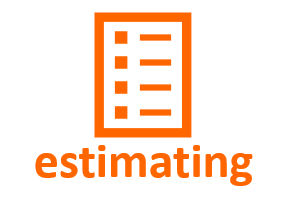MARKETING and SALES
Market Opportunity Analysis
Are You Playing In a Game Worth Winning?
The Market Opportunity Analysis decision model provides a quantitative measurement for determining if the overall size of your market and the percentage of that market you already have or can secure will meet your income goals.
Here is the assumption made:
You are a builder because you see construction as a career that can provide a living for your family, give you a sense of achievement, and provide for your future.
You are not a builder because your father was a builder, though he may have been. You are not a builder because you like working with your hands, though you may. You are not a builder because you like getting up at 5:00 a.m. in 10-degree weather, who does?. And you are not a builder because you don’t have anything else to do.
You are a builder because you expect to make a living doing it. And you run your own building business instead of work for someone else because something inside you demands that kind of self-direction.
Here is the conclusion:
You build dreams for other people because that is the best way to realize your own dreams.
If we can assume that you made a conscious choice to go into the business of building, then it follows that you expect that business to provide you with more than just a job. But have you taken a close look at the size of your market, and your potential share in it, to see if you realistically have a chance for financial success? Have you conducted an opportunity analysis for your market?
Here are three questions:
- First, ask yourself – What do I expect from my business?
- Then ask yourself – Is the market I am in large enough to achieve that goal?
- Then ask yourself – Does the game I am playing in this market offer the opportunity to meet my expectations, or am I just hoping?
That’s the tough one.
Developing the Market Opportunity Analysis decision model - answering the question
Many small builders don't give much thought to how big their market needs to be or what percentage of that market they need to be successful. The attitude seems to be “If I build it, they will buy. And if they buy, I will succeed.”
Let's take a look at the Market Opportunity Analysis decision tool, which can help you get a handle on the game in which you are playing.
The first formula we use is:
- Annual Income Required/Net profit %= Sales $$$ Necessary (1)
The second formula is:
- Total size of your market in $$$ X Your share of your market as % = Expected Sales $$$ in your market (2)
|
<---- View the Market Opportunity Analysis Spreadsheet Download the Market Opportunity Analysis Spreadsheet ----> |
Application of the Market Opportunity Analysis decision model
- ALERT: Before we start with the calculations, let's get a couple of things straight. The reason we are using financial decision models is to develop meaningful numbers, not precise numbers. There is a place for precision - it is called Accounting. Finance is about using accounting numbers to help decision-making. It is much easier to work with rounded numbers than precise numbers, and the usefulness is not compromised. The following example and other examples on this website will be meaningful, not necessarily precise.
Gather the facts:
- How much income do you need for the year? Be reasonable here. Everyone would like to make $1,000,000 per year, but not many markets will support that kind of income. The example below assumes $75,000.00
- What is your net profit percentage on recent jobs?A recent issue of BUILDER magazine indicated that the top 100 builders in the nation achieve a net profit of less than 7% of sales. To calculate your net profit percentage, divide your net profit last year by your total revenue. For purposes of our example, assume that net profits last year were $57,000 on sales of $1,100,000. Your net profit percentage would be 57,000/1,100,000 = 0.0518 = 5.18%.
- What is the total size of your market last year? You can get information on new home construction in your market from your building department. You want the number of new home permits and the permit valuation numbers. In our example the number of new homes permits was 1,563 and total permit valuation was $530,000,000. This results in an average per house permit valuation of $339,000 (530,000,000/1,563).
- How many houses did you build last year? For our example, you built four houses last year. Again, your total new house revenues from last year was $1,100,000.
- What is your percentage of your market?
- (a) To determine your percentage of the homes built, divide the number of houses you built (4) by the number of permits in your market (1563). In this example, your percentage of the homes built in your market was 0.26%, or about 1/4 of a percent.
- (b) To determine your percentage of the revenue generated, divide your annual revenue (1,100,000) by the total permit valuation (530,000,000). In this example, your percentage of the revenue generated in your market was 0.21%, or about 1/5 of a percent.
- What are the projections for homebuilding in your market for the coming year? If you don't have the information available, use last year's numbers. For this example we will assume that next year's projected number of permits is 1800 at the same average valuation ($339,000) per house.
Then
- Annual Income Required/Net profit %= Sales $$$ Necessary (1)
- $75,000/5.18% = $1,450,000 total sales needed (1)
Then
- Total size of your market in $$$ X Your share of your market as % = Expected Sales $$$ in your market (2)
- $610,200,000 (1,800 permits x $339,000) X 0.26% = $1,586,000 total sales expected (2)
Do the Expected Total Sales (2) equal or exceed the Total Sales Needed (1)? Yep.
Click here to see a spreadsheet detailing the above calculations. Look at column 1.
In the case shown above, the Market Opportunity Analysis decision model demonstrates that the market is sufficiently large to meet your expectations --IF 1,800 houses are built in your market, IF the average price is $339,000, and IF you get 1/4% of the market. Nothing is certain, but at least you can expect to have a shot.
By the way, the first formula above is a derivation of Break-Even Analysis; the second is a simple multiplicative function. The two formulas together form the Market Opportunity Analysis tool.
|
<---- View the Market Opportunity Analysis Spreadsheet Download the Market Opportunity Analysis Spreadsheet ----> |
What If? Analysis
You can play "What-If?" with the Market Opportunity Analysis formula set. What if the average price of a house drops to $310,000? What if the market jumps from 1,800 to 2,000 units annually? What if you can increase your share from 0.25% to 0.33% of the market by improving your marketing image? What if you can increase net profit per house from 5.18% to 7.0% by controlling costs better?
We have created an interactive version of the Market Opportunity Analysis spreadsheet to assist you in your "what-if?" analysis. Just complete the request form by clicking on the button above and it will be in your e-mail box in a couple of minutes. I think you will find it very useful for answering the question "Am I playing in a game that is worth winning?".
You'll find it even more useful for deciding what part of your business to work on first to make it more successful.
















